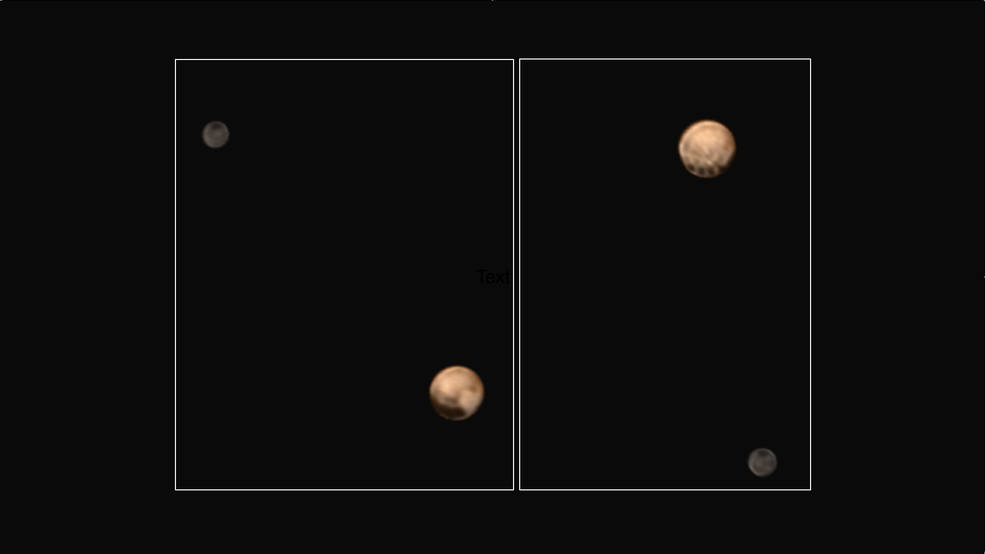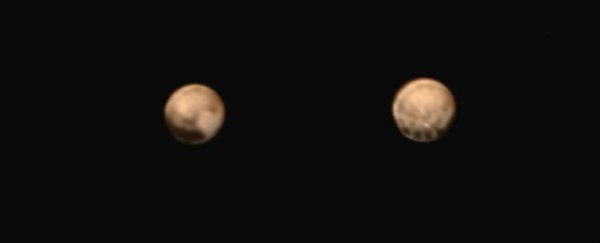As NASA's New Horizons spacecraft draws ever closer to our favourite icy dwarf planet, it's taken what are now the closest ever images of Pluto's distinctly beige surface. Thanks to these images, we can now see for the first time a series of very large and evenly spaced dark spots running along its equator.
The source of the spots isn't clear, and the team at NASA are intrigued by how they came to be so consistently sized and spaced. NASA reports that each of them is 480 kilometres (300 miles) in diameter, which is about the size of the state of Missouri. "It's a real puzzle - we don't know what the spots are, and we can't wait to find out," New Horizons principal investigator Alan Stern said in a press release.
Strange dark dots aside, the images, which also feature Pluto's little moon, Charon, have raised further questions about why the two are so differently coloured. "Also puzzling is the longstanding and dramatic difference in the colours and appearance of Pluto compared to its darker and greyer moon Charon," says Stern.
Black-and-white images of Pluto and Charon were captured by New Horizons' onboard Long-Range Reconnaissance Imager (LORRI), the team at NASA turned them into true-colour versions using the lower-resolution colour data gathered by the spacecraft's Ralph imaging instrument.
 Pluto and its moon Charon. Credit: NASA
Pluto and its moon Charon. Credit: NASA
These two instruments will also help New Horizons to detect if Pluto has clouds circulating in its atmosphere. "We're looking for clouds in our images using a number of techniques," one of the team, postdoc researcher Kelsi Singer, said, "If we find clouds, their presence will allow us to track the speeds and directions of Pluto's winds."
New Horizons is now nine days away from making its historic flyby of Pluto and its moons. A minor hiccup occurred yesterday morning when the team lost contact with the spacecraft for about 80 minutes and the craft switched itself over to an automated safe mode. While there's no need to panic at this stage, the team reports that full recovery is expected to take from one to several days, during which time no data or images will be captured.
If they don't manage to make contact with the craft in time for the July 14 flyby, there's a back-up plan - encounter mode. According to Irene Klotz at Discovery News, this program blocks the automated safe mode, and kicks the spacecraft and its data-collecting instruments back into gear.
"Encounter mode short-circuits the onboard intelligent autopilot so that if something goes wrong, instead of calling home for help, which is what most spacecraft do and what New Horizons does during cruise flight, it will just stay on the timeline," Stern said. "It will try to fix the problem, but it will rejoin the timeline because if it 'went foetal', as we say, if it just called home for help, it could miss the flyby."
We have our fingers tightly crossed that everything will work out for the flyby next week. We have a feeling NASA wouldn't miss it for the world.
